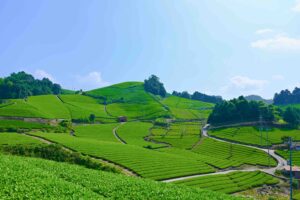Amino to Ine, Fukuchiyama 3 days
Schedule Date Place To Do Nov 2 Sun Amino - Taiza Rent Bike / Cycling Nov 3 Mon Taiza - Miyazu Cycling (±55km) […]
Kyoto MTB Course Top 5
As many Japanese mountain bikers say, Kyoto is the best mountain bike field in Japan. Kyoto is surrounded by m […]
Western Kyoto Arashiyama~Kinkakuji Loop Course(1day)
The Arashiyama area in the west of Kyoto has flourished as a resort for ancient aristocrats, as the tomb of su […]
Eastern Kyoto Gion~Fushimi~Nanzenji Loop Course(1day)
Most of the tourist activity in Kyoto is concentrated in the eastern area from Gion to Fushimi. The area aroun […]
Kyoto~Wazuka Tea Fields & Nara(1~2days)
We will explain the cycling route through Japan's most historic tea plantations from the perspective of a cycl […]
Cycling around Lake Biwa & Kyoto (1~4days)
Lake Biwa is the largest lake in Japan, and cycling around the lake is very popular.
It's very close to Kyoto, and an e-bike can take you to the western end of the lake in 15km (1 hour).
You can cycle along the canal from Kyoto to Lake Biwa, or take a short loop to Omihachiman, the old center of Lake Biwa, and back, or even cycle 200km around the lake over three days.
Model itinerary for sightseeing in Kyoto City (3days)
Recently, Kyoto has been hit by an issue of too many tourists, but in this article, a Japanese person living i […]
Recommended hided autumn cycling spots in Kyoto
Autumn is all about cycling!Autumn in Kyoto city is extremely crowded with people coming to see the autumn lea […]
Kyoto to Ine (160km/4-5days)
This is a 4day model plan where you rent a bicycle in Kyoto and return it in Ine. Of course, you can customize it as you like.










